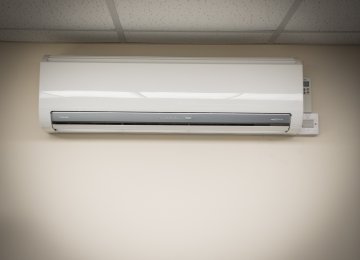Consumers can and should significantly cut their energy bills by revising consumption patterns and upgrading aging cooling systems, according to an official at Iran Power Generation, Distribution and Transmission Company (Tavanir).
Ahmad Yazdi, deputy in charge of the consumption department, says replacing ductless cooling packages by new units will raise power consumption efficiency and bring down electricity bills, Mehr News Agency reported.
For years the main state power supplier, environmentalists and the Energy Ministry has called on the people and industries to reduce power consumption, especially in the hot summer season when demand reaches its peak and phased blackouts are imposed in parts of the country.
According to Yazdi, the old air conditioners consume three to four times more electric power than new units.
“An increase in temperature by one degree Celsius raises electricity demand by 500-700 megawatts,” he said, stressing the need to further reduce consumption during peak hours by adjusting the temperature of the cooling systems to 24-26 degrees Celsius.
Electric demand of traditional ‘swamp coolers’ is roughly one-fourth of ductless air conditioners.
Persistent drought, low rainfall and dwindling water resources has prompted many people to replace their traditional cooling systems on rooftops with air conditioners, usually wall-mounted, that consume less water and considerably more electricity.
Ductless air conditioners are generally suitable for regions with humid weather such as Iran’s northern and southern regions. In areas with dry weather, such as Tehran, roof-based evaporative coolers are recommended.
The Energy Ministry says it is ready to withstand a higher electricity load and avoid outages as power demand nationwide soars in summer.
Electricity demand is forecast to hit 56,000 MW this summer, up from a record-high of 52,790 MW last year, according to a report by the Energy Ministry.
Gas-Insulated Substations
According to Seyyed Zaman Hosseini, a deputy manager at Tavanir, plans are in place to launch a production line for gas-insulated substations (GIS) equipment in the country.
A GIS uses superior dielectric gas and sulfur hexaflouride, at moderate pressure for insulation.
Referring to the advantages of GIS, Hosseini noted, “In a GIS the active parts are protected from the deterioration from exposure to atmospheric air, moisture and contamination.
That is why harsh weather conditions like sand storms have the least effect on such installations. Moreover, their maintenance cost is much lower than conventional high-voltage substations (AIS) that are built in open areas.”
“Building a GIS requires four times as much investment as an AIS,” he said, adding that domestic experts, with the help of private sector, have developed the pilot project of building GIS, yet the substations are still being tested by international energy companies to get the necessary licenses for mass production.











Add new comment
Read our comment policy before posting your viewpoints